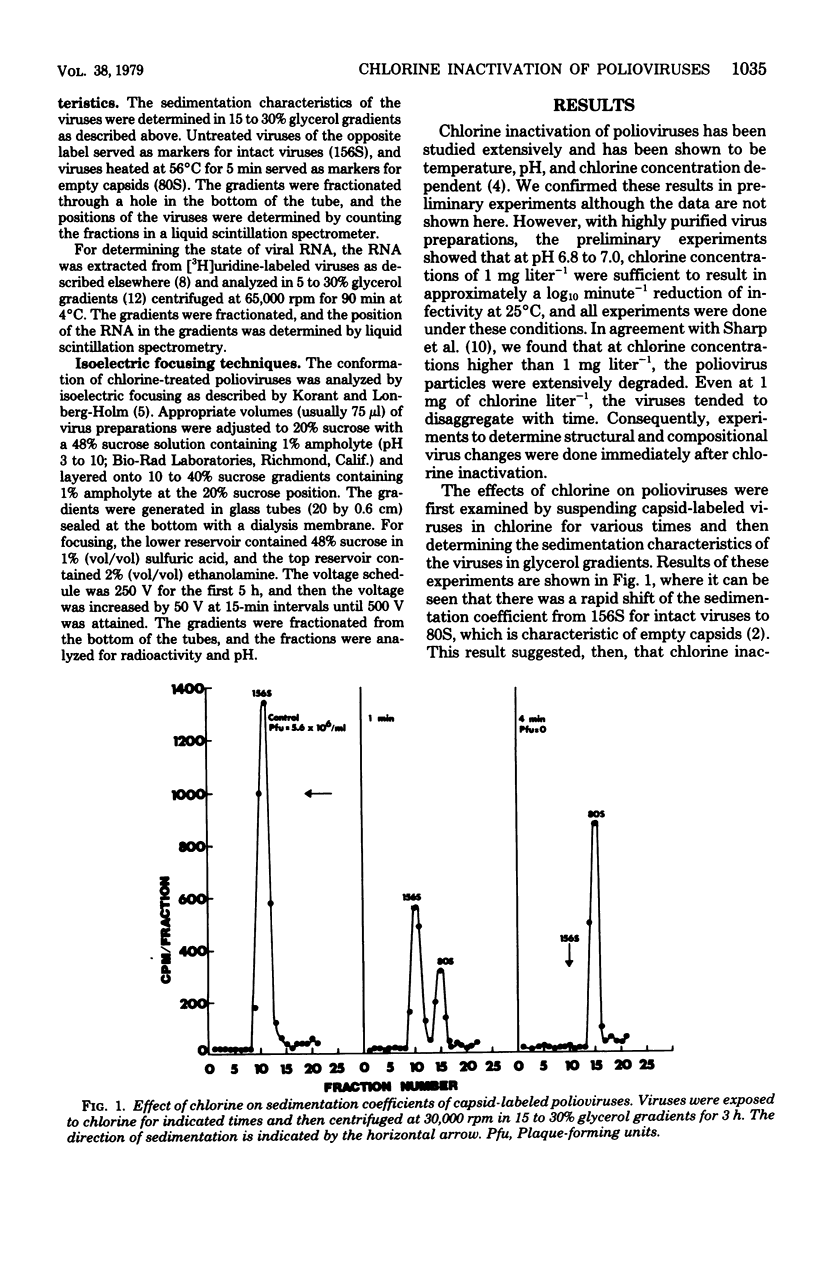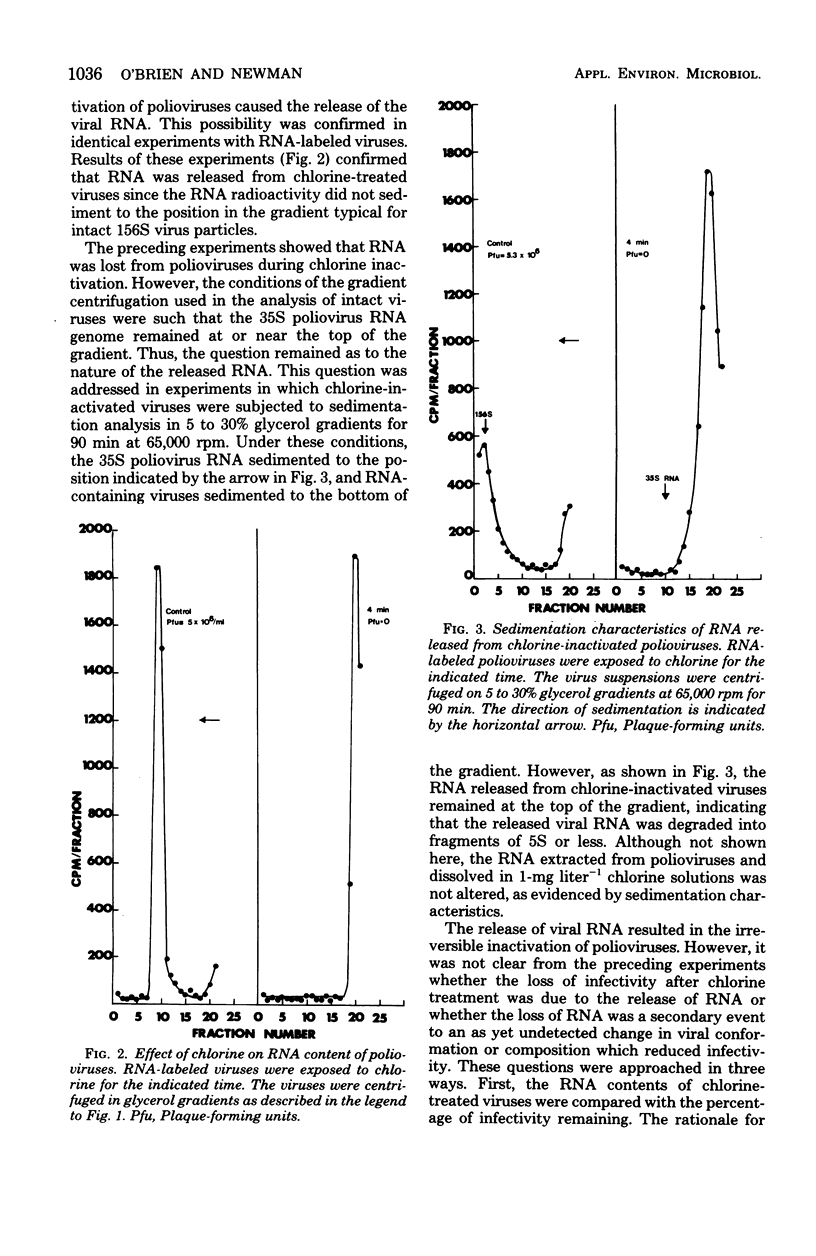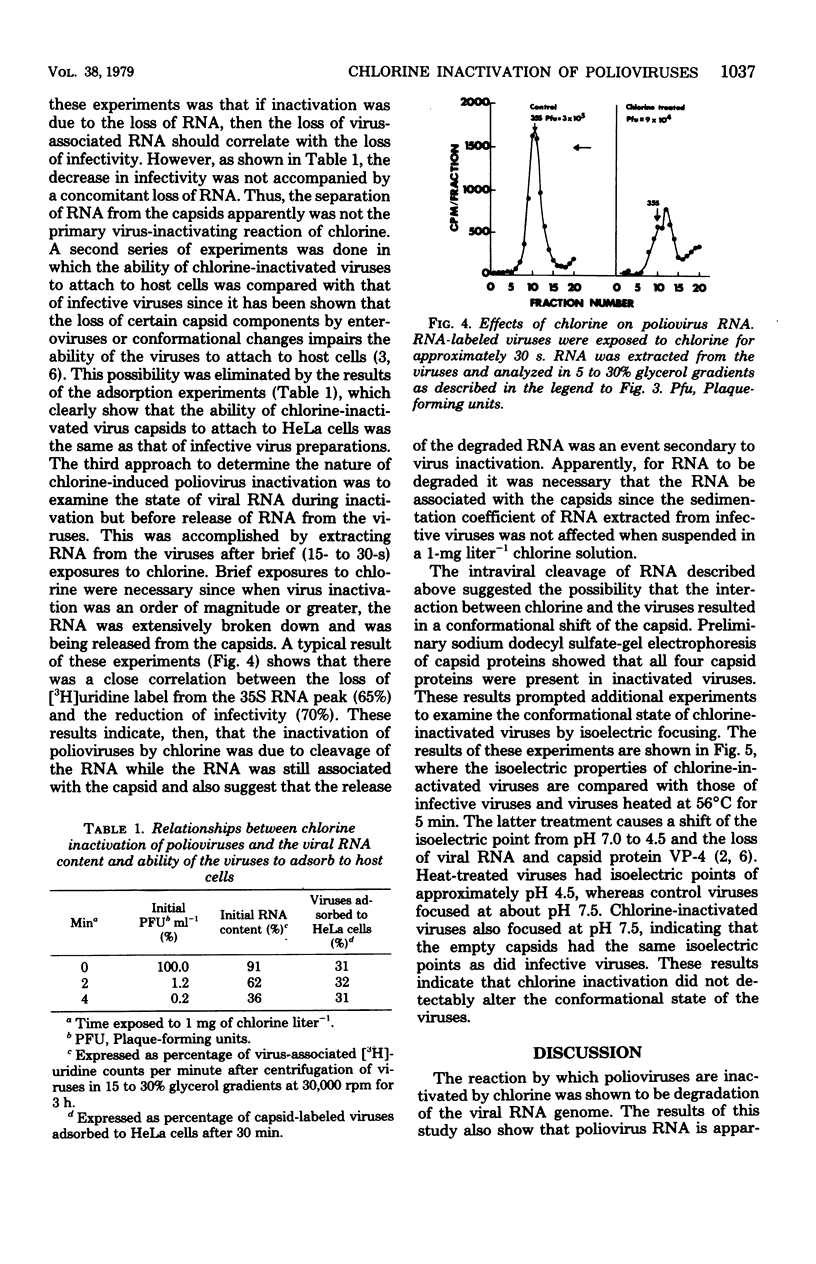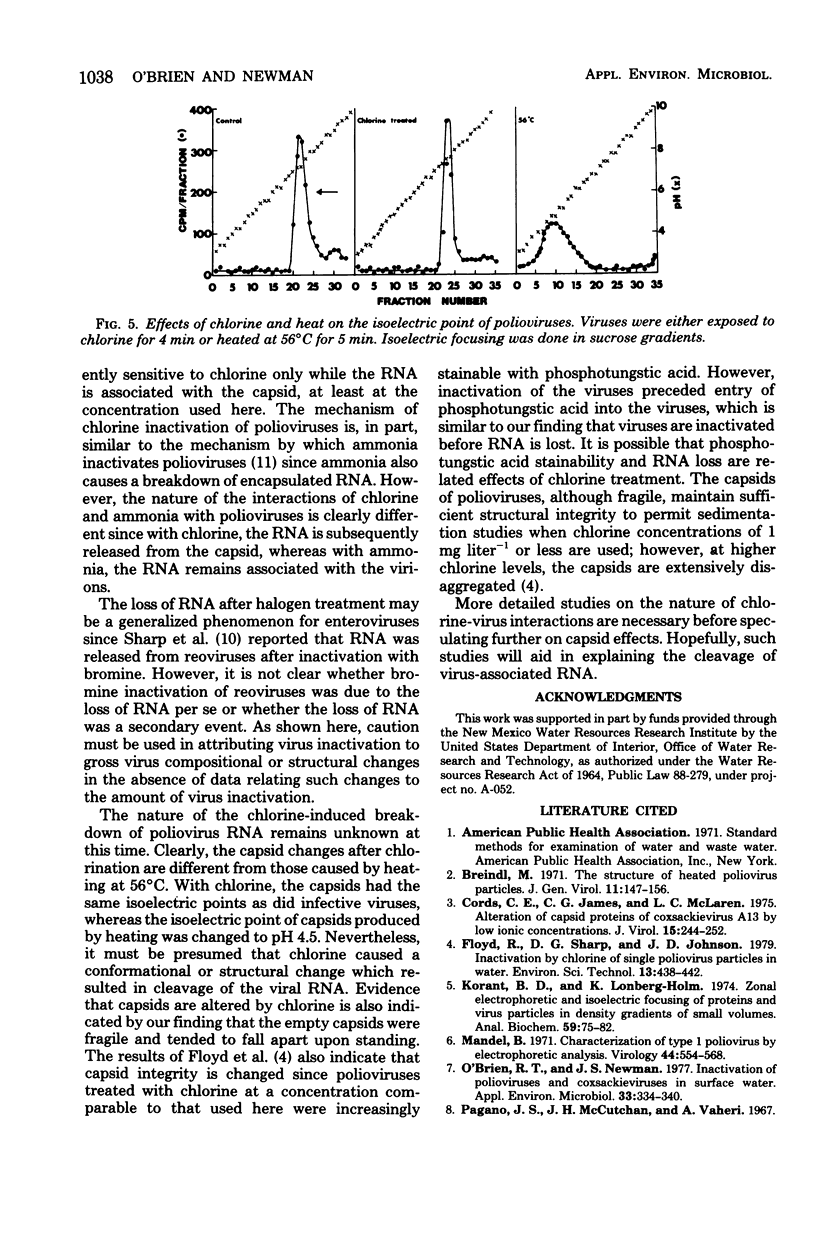Abstract
Chlorine inactivation of polioviruses resulted in the loss of viral ribonucleic acid, converting the viruses from 156S particles to 80S particles. However, it was found that virus inactivation occurred before the ribonucleic acid was released from the virions. Extraction of ribonucleic acid from partially inactivated virus suspensions indicated that chlorine inactivation was due to degradation of the ribonucleic acid before release and that ribonucleic acid loss was a secondary event. The empty 80S capsids had the same isoelectric point and ability to attach to host cells as infective virions. Thus, no major capsid conformational changes occurred during chlorine inactivation.
Full text
PDF





Selected References
These references are in PubMed. This may not be the complete list of references from this article.
- Breindl M. The structure of heated poliovirus particles. J Gen Virol. 1971 Jun;11(3):147–156. doi: 10.1099/0022-1317-11-3-147. [DOI] [PubMed] [Google Scholar]
- Cords C. E., James C. G., McLaren L. C. Alteration of capsid proteins of coxsackievirus A13 by low ionic concentrations. J Virol. 1975 Feb;15(2):244–252. doi: 10.1128/jvi.15.2.244-252.1975. [DOI] [PMC free article] [PubMed] [Google Scholar]
- Korant B. D., Lonberg-Holm K. Zonal electrophoresis and isoelectric focusing of proteins and virus particles in density gradients of small volume. Anal Biochem. 1974 May;59(1):75–82. doi: 10.1016/0003-2697(74)90011-6. [DOI] [PubMed] [Google Scholar]
- Mandel B. Characterization of type 1 poliovirus by electrophoretic analysis. Virology. 1971 Jun;44(3):554–568. doi: 10.1016/0042-6822(71)90369-2. [DOI] [PubMed] [Google Scholar]
- O'Brien R. T., Newman J. S. Inactivation of polioviruses and coxsackieviruses in surface water. Appl Environ Microbiol. 1977 Feb;33(2):334–340. doi: 10.1128/aem.33.2.334-340.1977. [DOI] [PMC free article] [PubMed] [Google Scholar]
- Ward R. L., Ashley C. S. Inactivation of poliovirus in digested sludge. Appl Environ Microbiol. 1976 Jun;31(6):921–930. doi: 10.1128/aem.31.6.921-930.1976. [DOI] [PMC free article] [PubMed] [Google Scholar]
- Ward R. L. Mechanism of poliovirus inactivation by ammonia. J Virol. 1978 May;26(2):299–305. doi: 10.1128/jvi.26.2.299-305.1978. [DOI] [PMC free article] [PubMed] [Google Scholar]


